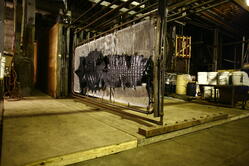 If you’re here on this site, something about alligator skin appeals to you, whether you’re an aficionado of alligator skin or a designer or manufacturer looking for a supply. However, you might not be a veteran alligator skin buyer just yet. Perhaps you’re just starting or you’re looking for more information regarding how you might go about purchasing alligator skin. We’re here to help.
If you’re here on this site, something about alligator skin appeals to you, whether you’re an aficionado of alligator skin or a designer or manufacturer looking for a supply. However, you might not be a veteran alligator skin buyer just yet. Perhaps you’re just starting or you’re looking for more information regarding how you might go about purchasing alligator skin. We’re here to help.
What Are The Grading Standards?
The most important factors to consider in buying alligator skin are grade and size. Let’s start with grading. The following are common grading standards:
Divide the belly of the alligator skin into four imaginary quadrants:
- Grade I: No defects on any quadrant
- Grade II: Defects on one quadrant
- Grade III: Defects on two quadrants
- Grade IV: Defects on three quadrants
Defects are commonly holes, scars and scratches. A common misconception is that if you buy a grade III or IV skin, your finished products will have defects on the skin. This is not the case. A manufacturer experienced in working with alligator skin will cut around the defects so that your finished product will only include defect-free panels.
Grade I/II alligator skin usually makes garments, watchstraps, handbags, upholstery and luggage. Grade II/III alligator skin is usually used in shoes, wallets and boots. Grade III/IV alligator skin tends to be used for belts, and small accessories where manufacturers can cut small panels around the defects.
What About Size?
Sizing is also important to the buying process. Alligator skin is measured in centimeter width at the widest point of the belly. Depending on width of the skin, you’ll be able to make different goods using the various grades of the alligator skin. In the 20-29 cm range, you can make watchstraps, shoes, and smaller goods. From 30-34 cm, you can make small handbags, boots, and larger wallets. From 35-39cm, you can make garments, medium-sized handbags, and other medium-size accessories like tablet cases. From 40-59cm, you move into garments, larger handbags and belts. Alligator skin larger than 60 cm is most commonly used for luggage and larger upholstery.
Now, you might be curious to know what the price of these skins is going to be. Well, it is fairly logical: the most expensive alligator skin is the large grade I skins. The least expensive are the smallest, lowest grade. Another small price consideration is what color and finish you’ll be applying to the alligator skin. Will you need a specialty finish like a metallic, pearl or iridescent? Do you want a light color like yellow, pink or white? These types of products typically have small surcharges attached to them, as it is more work.
Lastly, remember that availability can also affect prices. As with any natural products, alligator skin supply is vulnerable to weather and other things out of our control.
If you have any more questions or would like to price out some skins for a project you’re working on, feel free to contact us. We’re ready to help!



